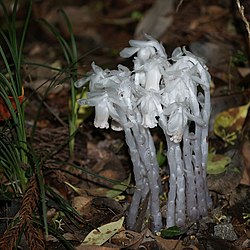| Monotropastrum | |
|---|---|
 | |
| Monotropastrum humile | |
| Scientific classification | |
| Kingdom: | Plantae |
| Clade: | Tracheophytes |
| Clade: | Angiosperms |
| Clade: | Eudicots |
| Clade: | Asterids |
| Order: | Ericales |
| Family: | Ericaceae |
| Subfamily: | Monotropoideae |
| Tribe: | Monotropeae |
| Genus: | Monotropastrum Andres |
Monotropastrum is a small genus of myco-heterotrophic plants in the family Ericaceae. As currently circumscribed the group includes three species. [1]